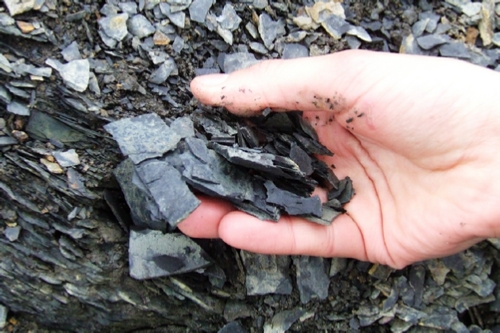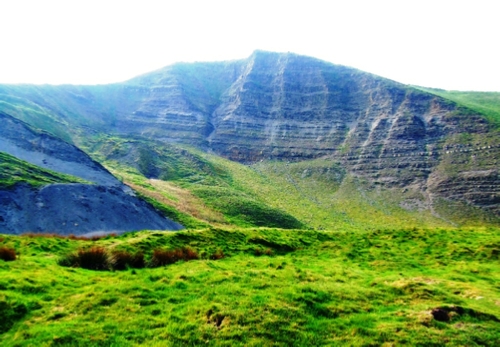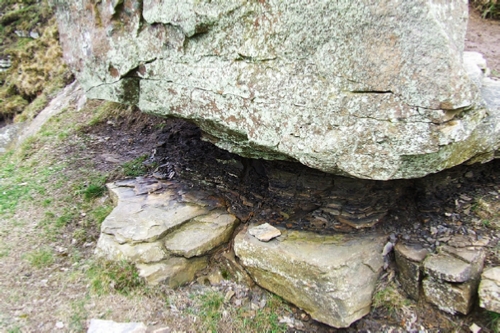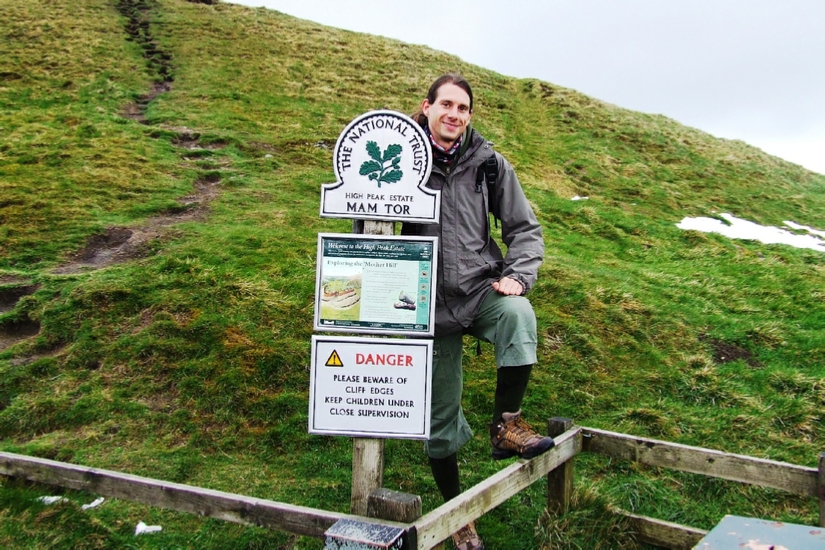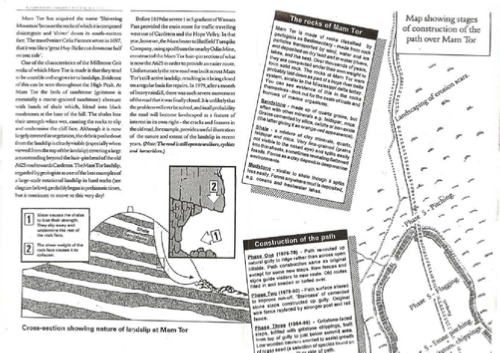

Article #1: England → Mam Tor (hill)
Written by Laszlo Bokor; First published on 7 May 2017
The Sign Hunters © All rights reserved
Where a hill shivers and the land slides: Mam Tor and its surroundings
Introduction
The Peak District may be known by many people in Britain and elsewhere for its outstanding natural beauty, where moorlands meet limestone hills, and where green valleys host picturesque human settlements. If the name itself cannot straight away connect you to its fascinating look, many of you surely have already come across a bottle of Buxton mineral water, some Bakewell ’pudding’, Ashbourne gingerbread, Derbyshire oatcakes, Hartington Stilton, or Derby sage cheese – these are all famous produce of the Peak District.
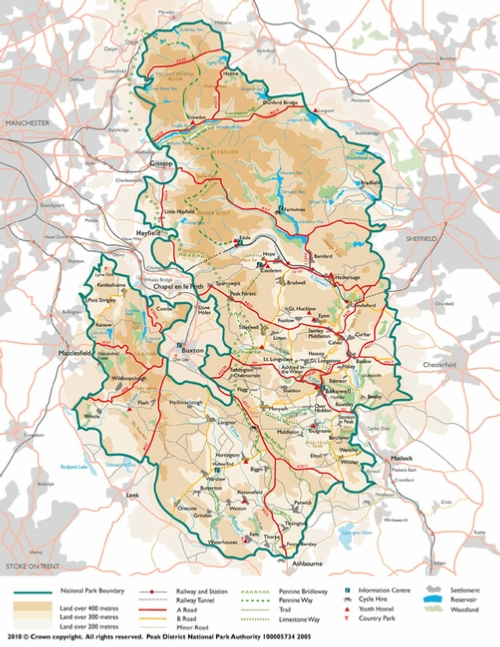 The Peak District National Park
The Peak District National Park
Source of Image: The Peak District NP
The area, due to its natural and historic importance, is the first established national park in the British Isles, thus it is the first in England. Founded in 1951, the Peak District National Park is situated in the southern end of the Pennines covering most of northern Derbyshire as well as parts of Cheshire, Yorkshire, and Staffordshire. It takes up an overall of 1,438 square km of land. Despite its name, it is more like a ‘smooth’ upland as even the highest peak, Kinder Scout, just grows 636 m above sea level.
With over millions of day visits to the Peak District National Park every year, making it a popular destination and one of the most visited national parks in the world. It is a great place for the lovers of outdoors, you can do the usual activities including walking, cycling, and horse-
Diverse geology
Most rocks in the Peak District National Park were laid down in the Carboniferous geological period (between 358.9–298.9 million years ago). The area can be spilt into two major parts. The northern side is known as ’Dark Peak’. This part is made up by millstone grit (sandstone) and the area looks more like a moorland. The Southern and central side of the park is known as the ’White Peak’ because rocks there were formed in the Carboniferous period and much of them is limestone. Moreover, among the diverse range of rocks, the park also consists of igneous rocks, shale, and some measures of coal which once upon a time contributed significantly to the Midlands-
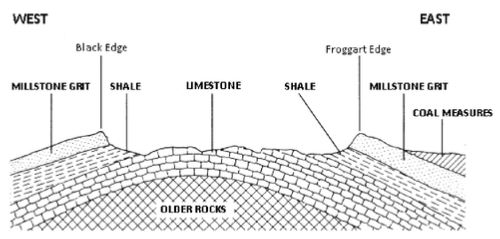 A cross-
A cross-
Source of Image: Wikipedia
The oldest type of rock in this area is Carboniferous limestone which was formed about 350 million years ago. At that time, the area was covered by shallow tropical sea, and what is now the British Isles were situated near the Equator. The bodies of dead animals – which include shellfish, corals, sea lilies and other sea plants species – were fossilised and, over time due to their buried position and being exposed to high temperature and pressure, they became limestone.
Photo by Bokor, L. (2012)
Around 325 to 300 million years ago, this area then was a part of a huge river delta. Sediments of mud, sand, and pebbles were deposited. Fine grained mud and sand under the water formed a rock which is called shale. It is easy to be removed by erosion. The coarser pebbles rose as sandbanks formed a sandstone which is known as millstone grit.
Mam Tor
Mam Tor is a 517-
Photo by Bokor, L. (2007)
About 350 million years ago, this location was covered with a Carboniferous sea. Around 325 million years ago the sea withdrew, the area became part of a river delta which ran down from Caledonia (today known as Grampian Mountains). Over the years, in the Tertiary about 20 million years ago, the region was uplifted, which was then composed of mostly loosely structured sediments, for example, shales, mudstones, and sandstone. Because of this sedimentary structure, the Mam Tor peak quickly became unstable. The periods of ice ages weakened the cohesion of rocks which resulted in a landslide and destabilised the entire mountain area. The landslide was followed by more, smaller landslips. The surface of Mam Tor is, therefore, visibly marked by many landslides which are evidences for active landforms and that easily loose sediments can cause dramatic landscape shaping.
Landslides are the downslope movement of rock or debris or soil under the influence of gravity. It can be called a mass movement or mass wasting. It can occur by natural or human causes. Mam Tor has many scars which were caused by landslides. The Mam Tor’s large landslide is a kilometre-
Photo by Bokor, L. (2012)
The geology of this area is the most important to understand physical processes. The gritstones are heavily joined which makes it easy for blocks to break away, fall apart, and slide. Beneath the gritstones lie the shales. These are inherently weaker than the gritstones, especially when they are wet: they are prone to disintegrate in water. Because water can easily seep through the gritstones, shales may become weakened and the slopes unstable.
Photo by Bokor, L. (2012)
The Shivering Mountain
Mam Tor is also known as the ‘shivering mountain’ because the rocks of which it is composed disintegrate, the unstable layers of shales and gritstone slowly slip away which over thousands of years can cause small landslips and huge landslides. The massive one about 4000 years ago caused the eastern face of the mountain to completely fall away while, more recently in 1979, the main road A625 between Sheffield and Chapel-
Source of image: National Trust
This road was built first in the beginning of 19th century, but it was disturbed by landslides over and over again. The road was difficult to keep open, having to be repaired on a regular basis. Accordingly, it was finally closed in 1979. Now it is being used by walkers and cyclists or horse-
Photos of the A624 road at Mam Tor by Bokor, L (2007; 2012)
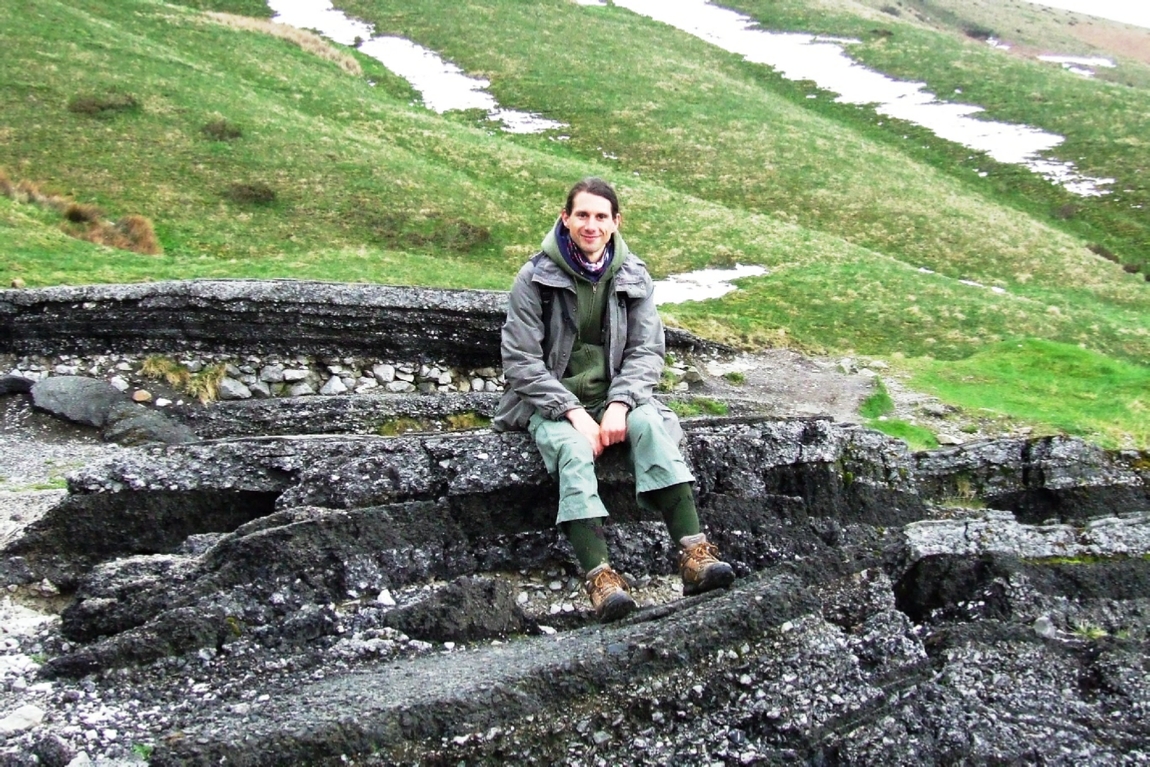
Laszlo had a closer look of the crumbled road layers
Photo by Bokor, L (2012)
The Surroundings
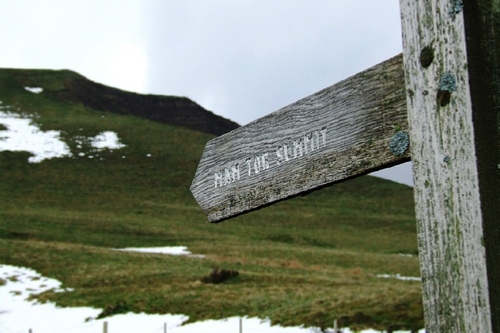 If you plan to visit Mam Tor, you will be pleased to know that there are much more than slipping rocks and dismantling hills that this relatively small area can offer you. Hiking routes like spider webs zig-
If you plan to visit Mam Tor, you will be pleased to know that there are much more than slipping rocks and dismantling hills that this relatively small area can offer you. Hiking routes like spider webs zig-
The path to the summit of Mam Tor
Photo by Bokor, L. (2012)
Grab the Ordnance Survey Explorer map marked OL 1 (The Peak District, Dark Peak area) and follow the route I took. I started a circular trip at Mam Tor car park (at 455 m) by the disused mines. As the first move, I walked up to the actual Mam Tor summit (517 m) from where you can enjoy a great panoramic view in 360 degrees.
The Ordnance Survey OL1 Explorer Map of the Peak District, Dark Peak area
Laszlo sitting on the summit of Mam Tor
Photo by Bokor, L. (2012)
From this spot then I hiked on the ridge, Mam Tor Bridleway, up to Hollins Cross (426 m). This smooth hilltop where several footpaths converge and you can make your way either in north-
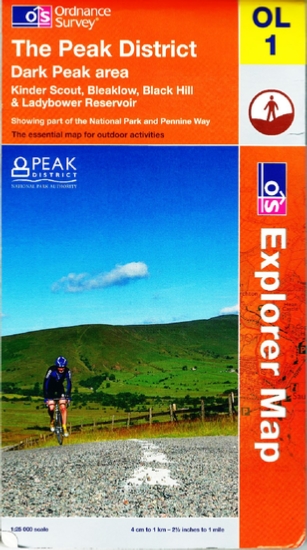
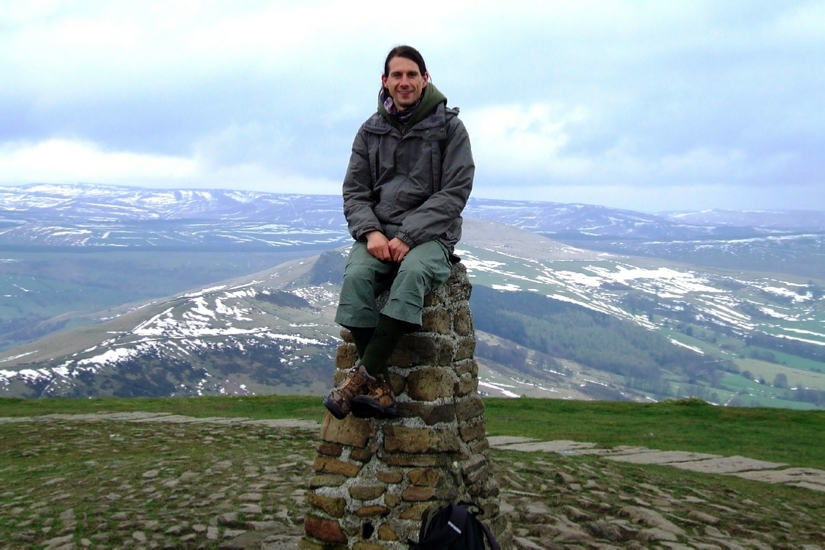
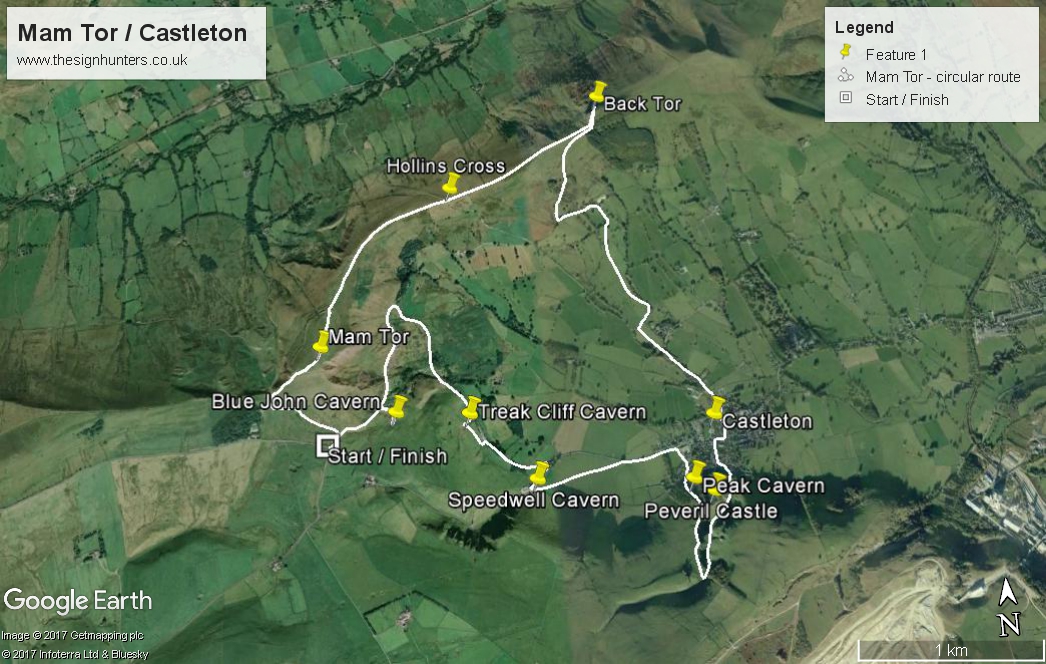
Photos from the direction of Back Tor and Moorland Centre at Edale by Bokor, L (2012)
If you like nature, you can spend plenty of time enjoying the view and plan your next move. I decided to descend on the steep hillside towards Only Grange Farm to eventually get to Castleton.
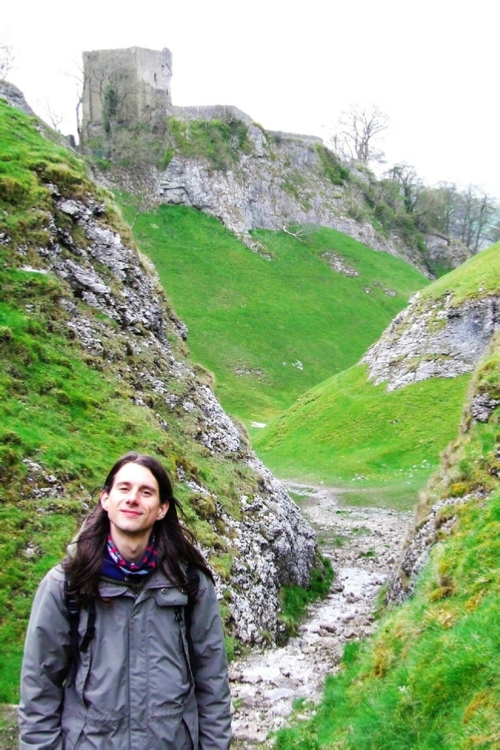 Castleton is a small village in the Hope Valley with a relatively small population (642 according to the 2011 Census). Its name first mentioned in 1086 and its existence relates to the locally available rich lead resources. This is what made it prosper over the years. Since the closure of the mines in the 1920s, the main industry in the area has been cement production. During the recent decades, tourism has become another key economic factor. No surprise, you will find here nice local shops, tea houses, great pubs, a youth hostel, and there are also the stunning ruins of Peveril Castle, a museum, and an education and information centre that serves visitors.
Castleton is a small village in the Hope Valley with a relatively small population (642 according to the 2011 Census). Its name first mentioned in 1086 and its existence relates to the locally available rich lead resources. This is what made it prosper over the years. Since the closure of the mines in the 1920s, the main industry in the area has been cement production. During the recent decades, tourism has become another key economic factor. No surprise, you will find here nice local shops, tea houses, great pubs, a youth hostel, and there are also the stunning ruins of Peveril Castle, a museum, and an education and information centre that serves visitors.
Peveril Castle in Castleton
Photo by Bokor, L. (2012)
The surroundings of Castleton offer fantastic opportunity for geography field trips. Beside Mam Tor where the effects of landslides can be observed and learned, many non-
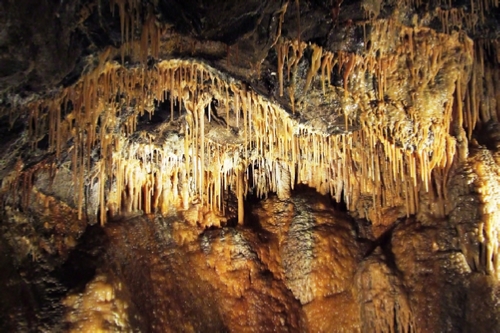 Treak Cliff Cavern decorated with stalactites
Treak Cliff Cavern decorated with stalactites
Photo by Bokor, L. (2012)
This handful of areas with several sites around Mam Tor looked after by National Trust offer a high number of attractions, especially for those with immense geological interest. If you are planning to organise a holiday in the Peak District National Park, it is worth thinking of spending more than just a couple of days.
Related settlement signs
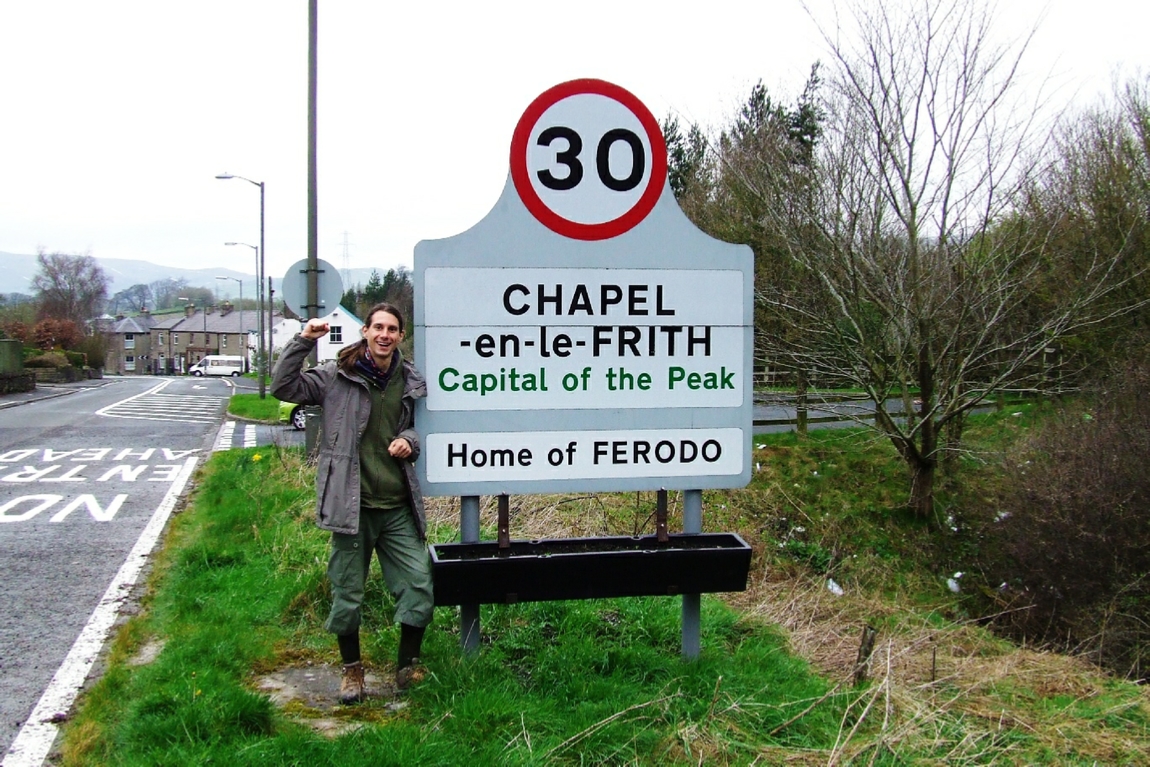
The Chapel-
Photos by Bokor, L (2012)
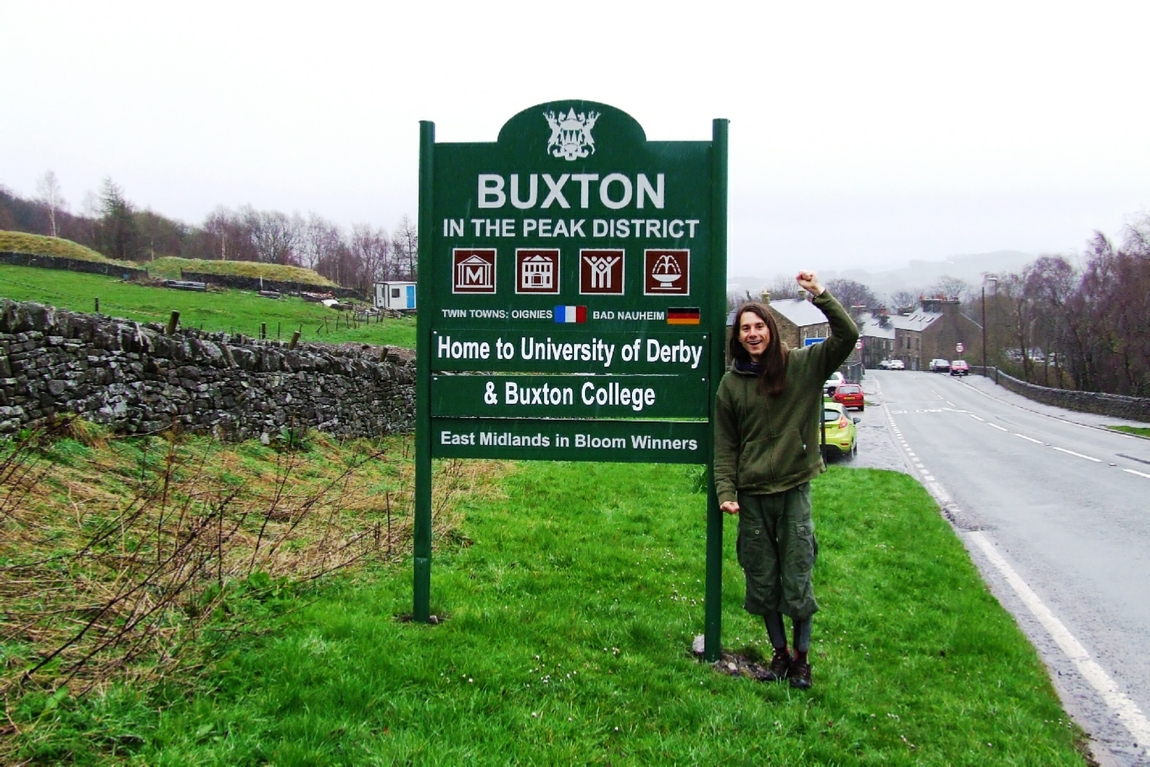
The Buxton settlement sign
Photos by Bokor, L (2012)

The Sign Hunters © All rights reserved (2022)
www.thesignhunters.co.uk ● hello@thesignhunters.co.uk
Scroll down
▼
